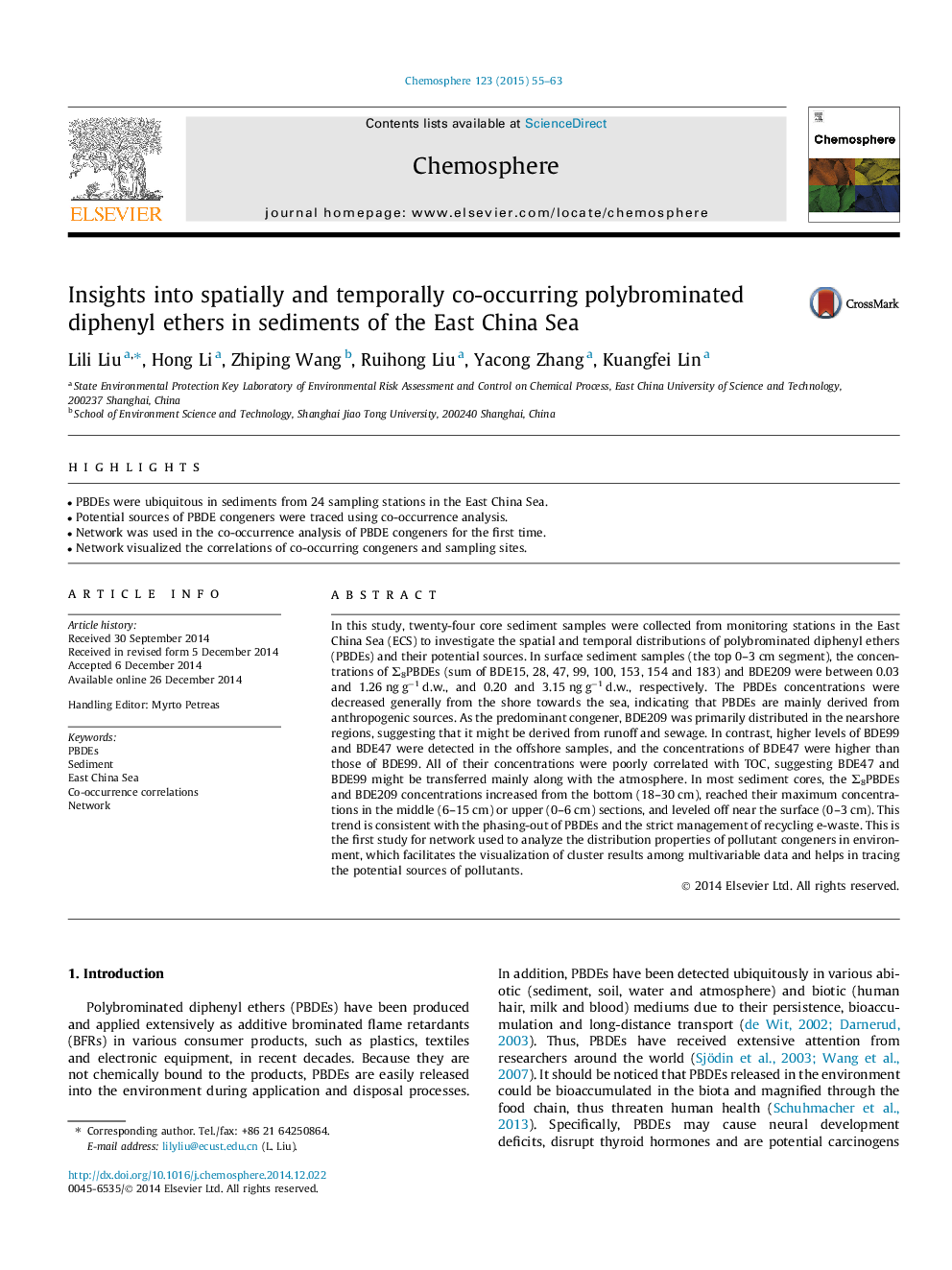| کد مقاله | کد نشریه | سال انتشار | مقاله انگلیسی | نسخه تمام متن |
|---|---|---|---|---|
| 4408582 | 1618848 | 2015 | 9 صفحه PDF | دانلود رایگان |
• PBDEs were ubiquitous in sediments from 24 sampling stations in the East China Sea.
• Potential sources of PBDE congeners were traced using co-occurrence analysis.
• Network was used in the co-occurrence analysis of PBDE congeners for the first time.
• Network visualized the correlations of co-occurring congeners and sampling sites.
In this study, twenty-four core sediment samples were collected from monitoring stations in the East China Sea (ECS) to investigate the spatial and temporal distributions of polybrominated diphenyl ethers (PBDEs) and their potential sources. In surface sediment samples (the top 0–3 cm segment), the concentrations of Σ8PBDEs (sum of BDE15, 28, 47, 99, 100, 153, 154 and 183) and BDE209 were between 0.03 and 1.26 ng g−1 d.w., and 0.20 and 3.15 ng g−1 d.w., respectively. The PBDEs concentrations were decreased generally from the shore towards the sea, indicating that PBDEs are mainly derived from anthropogenic sources. As the predominant congener, BDE209 was primarily distributed in the nearshore regions, suggesting that it might be derived from runoff and sewage. In contrast, higher levels of BDE99 and BDE47 were detected in the offshore samples, and the concentrations of BDE47 were higher than those of BDE99. All of their concentrations were poorly correlated with TOC, suggesting BDE47 and BDE99 might be transferred mainly along with the atmosphere. In most sediment cores, the Σ8PBDEs and BDE209 concentrations increased from the bottom (18–30 cm), reached their maximum concentrations in the middle (6–15 cm) or upper (0–6 cm) sections, and leveled off near the surface (0–3 cm). This trend is consistent with the phasing-out of PBDEs and the strict management of recycling e-waste. This is the first study for network used to analyze the distribution properties of pollutant congeners in environment, which facilitates the visualization of cluster results among multivariable data and helps in tracing the potential sources of pollutants.
Journal: Chemosphere - Volume 123, March 2015, Pages 55–63
